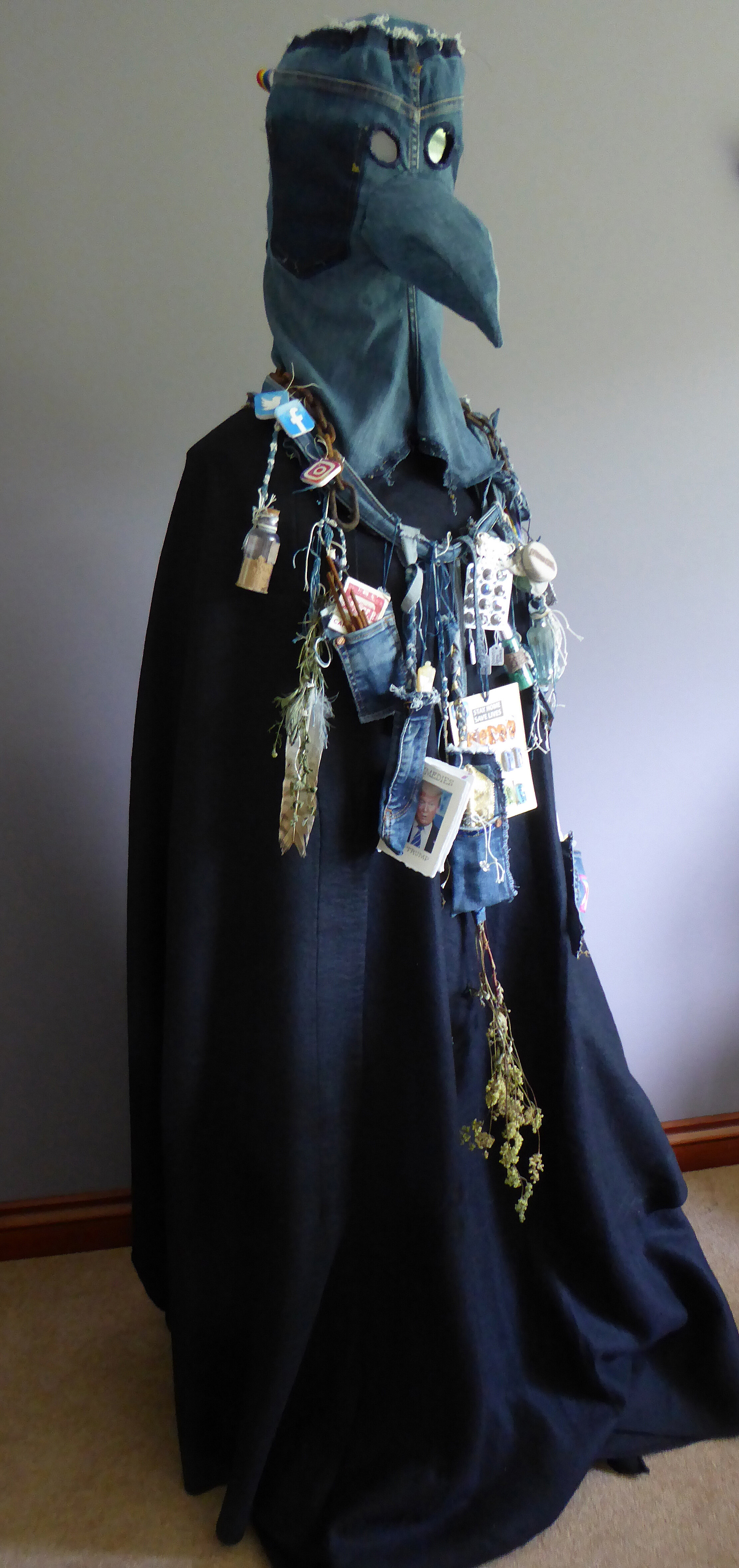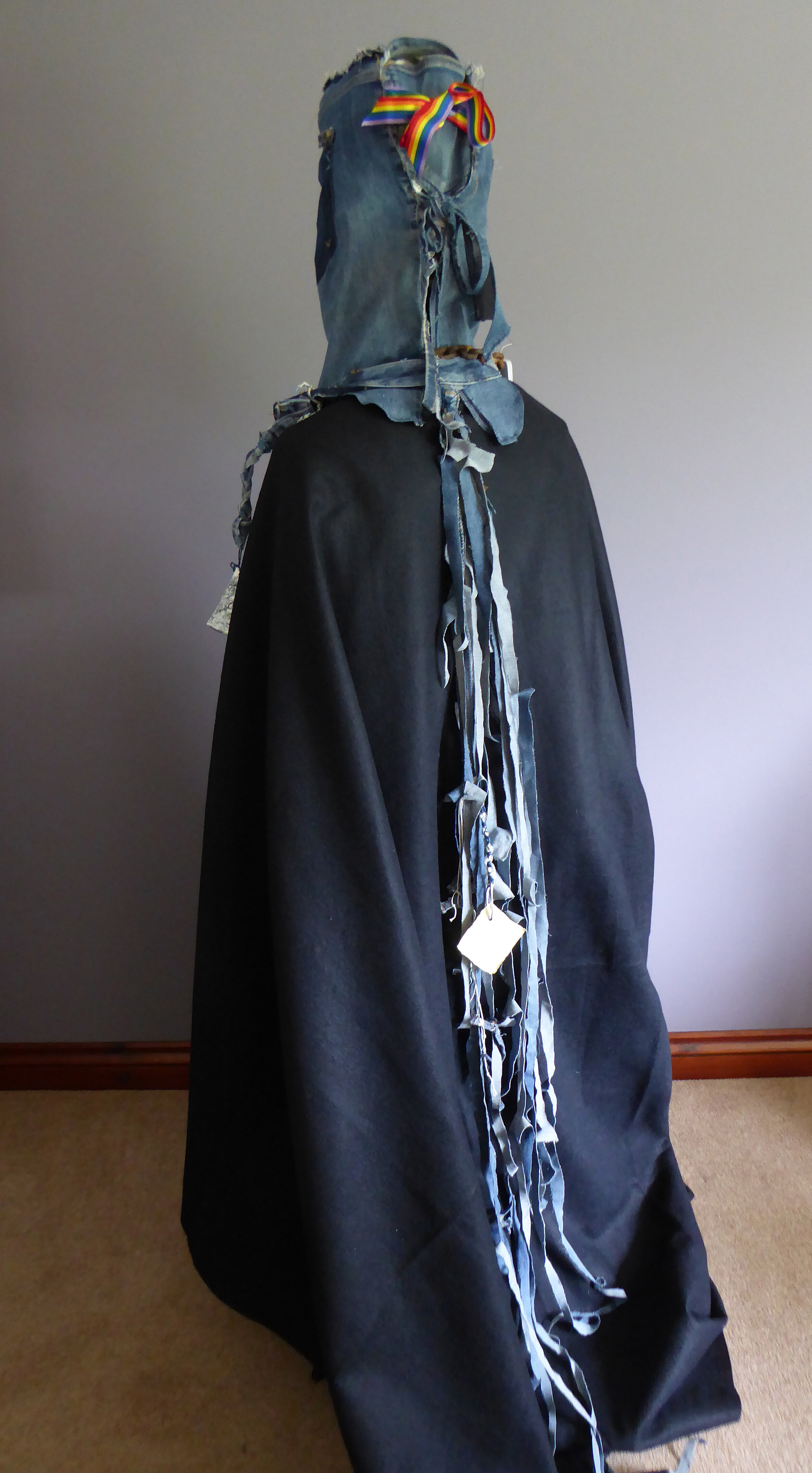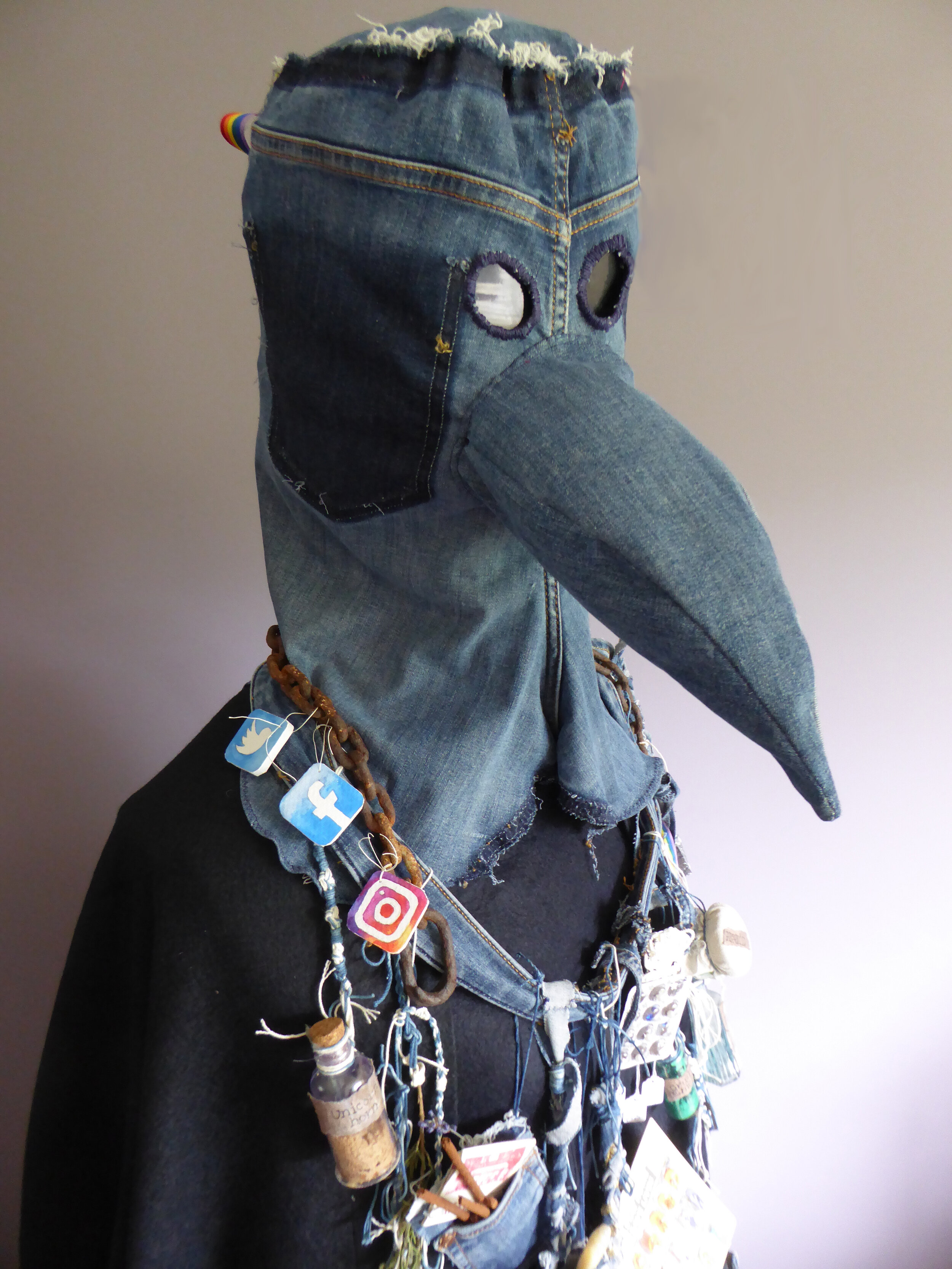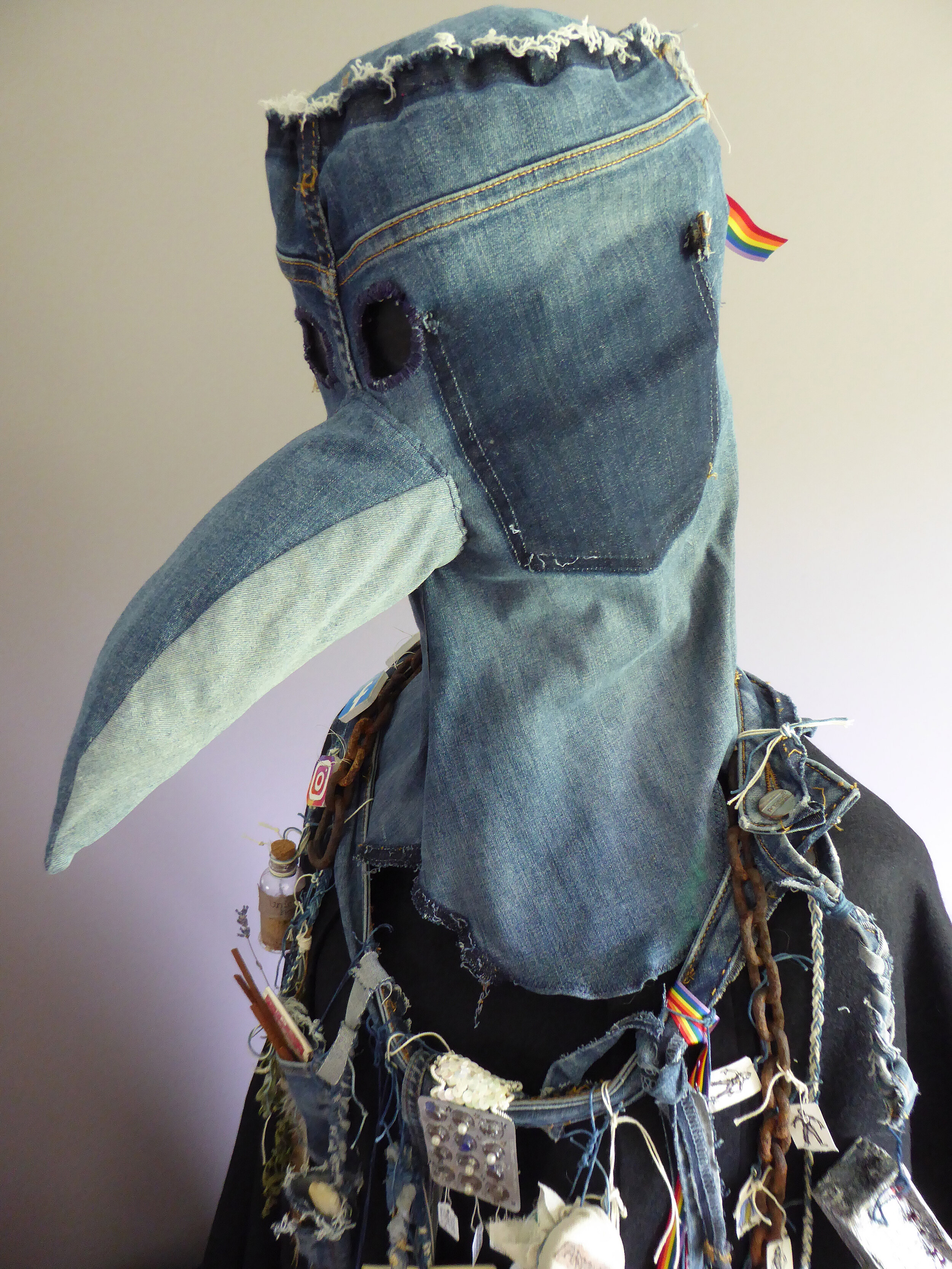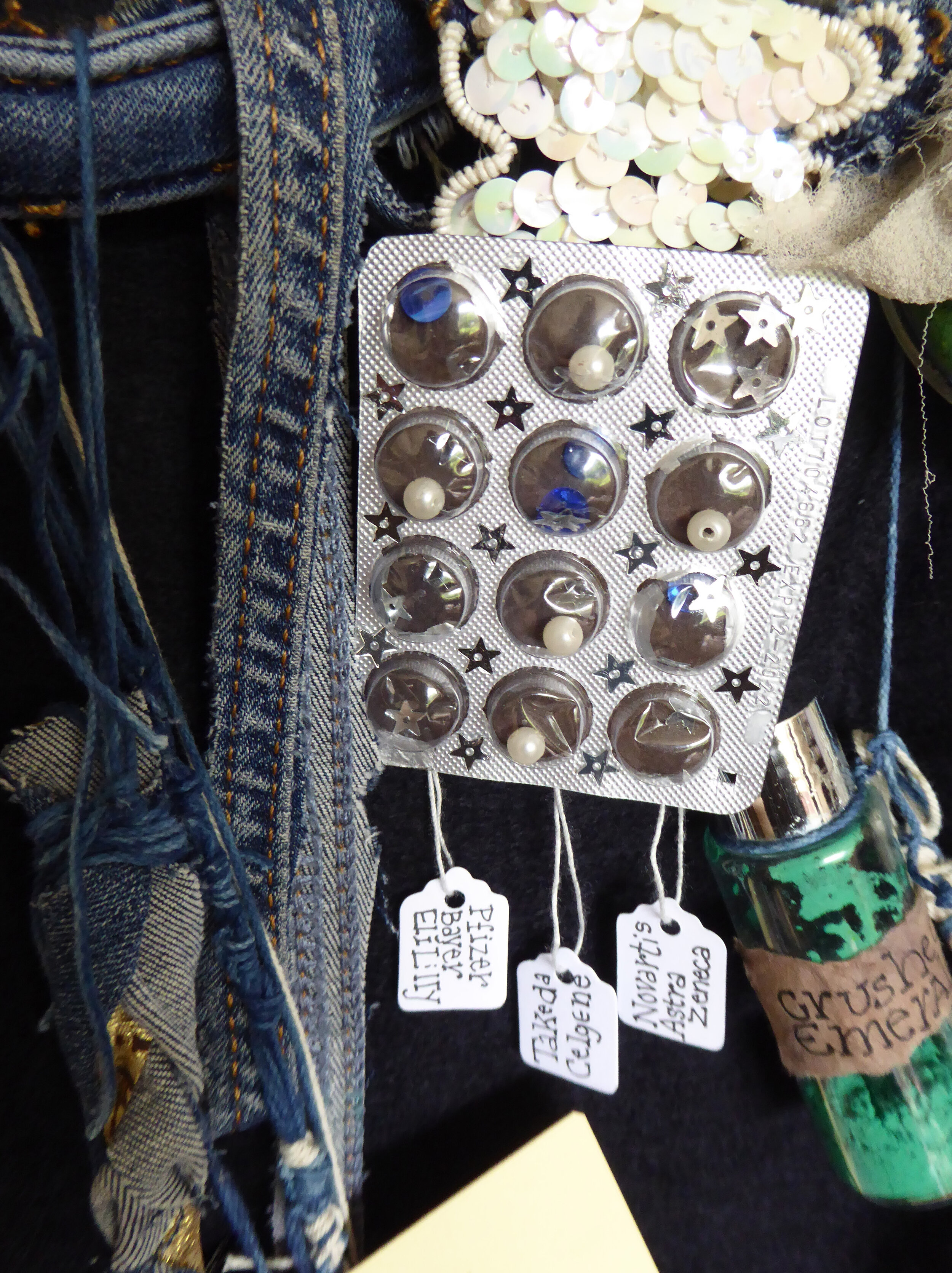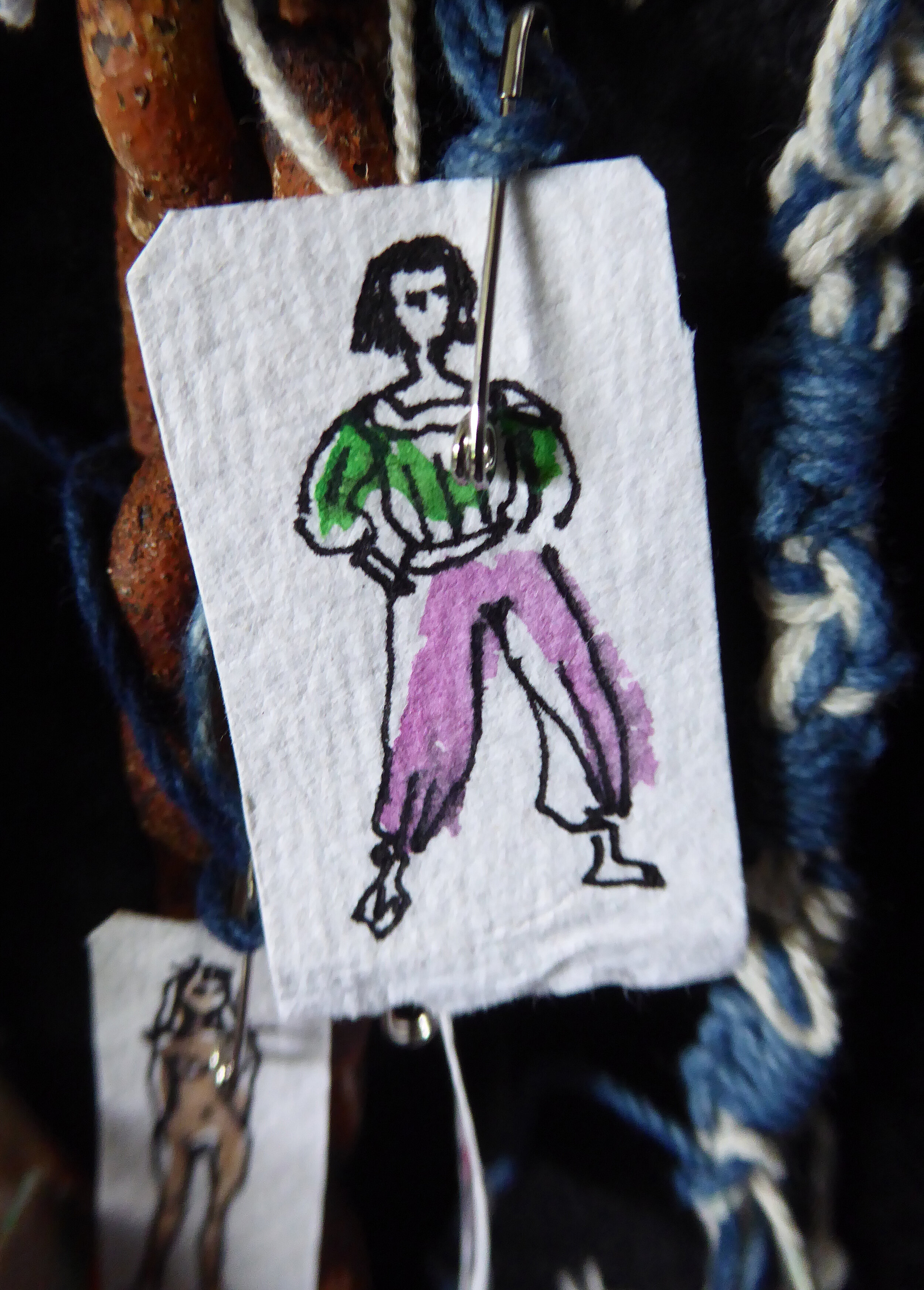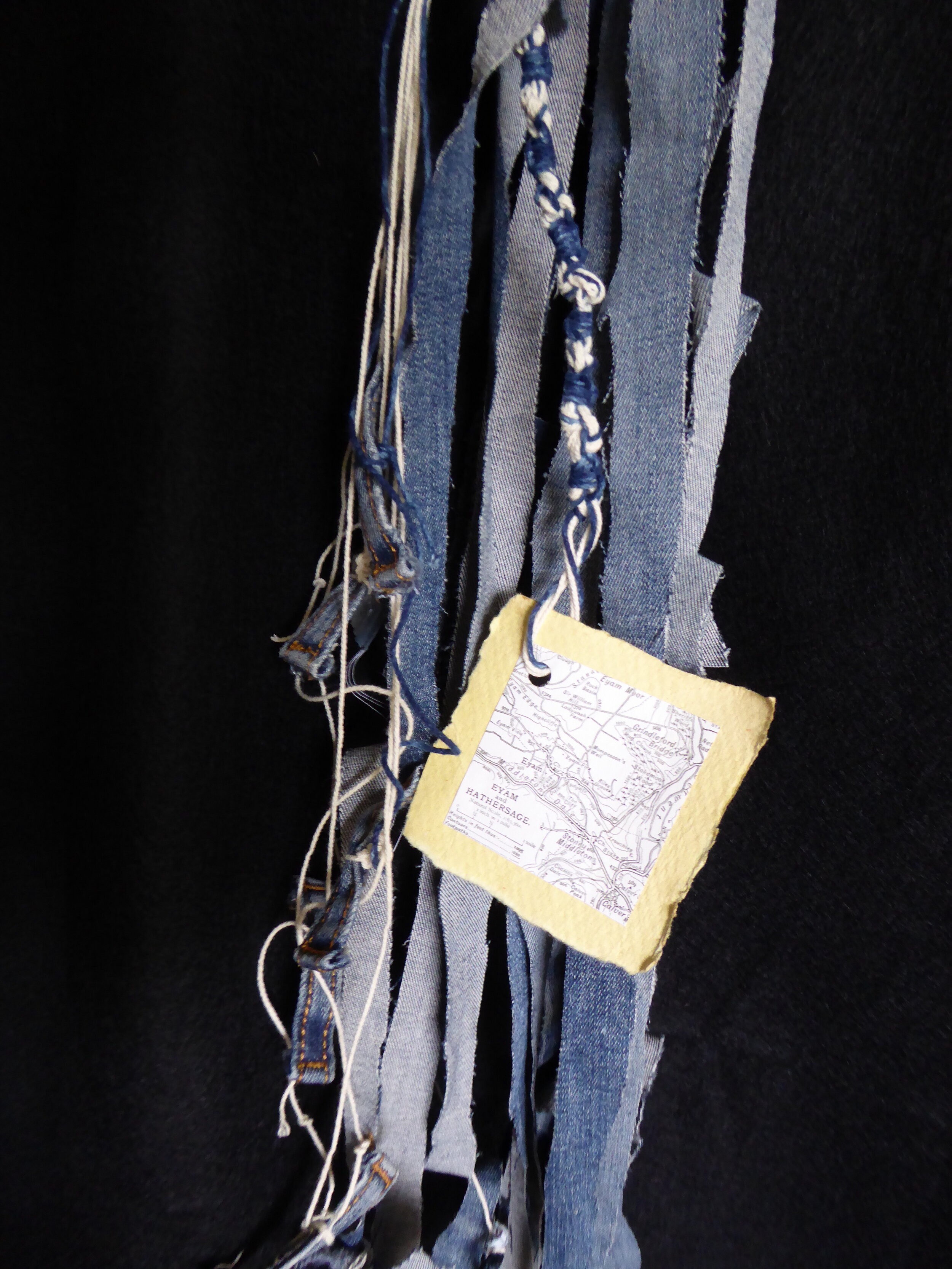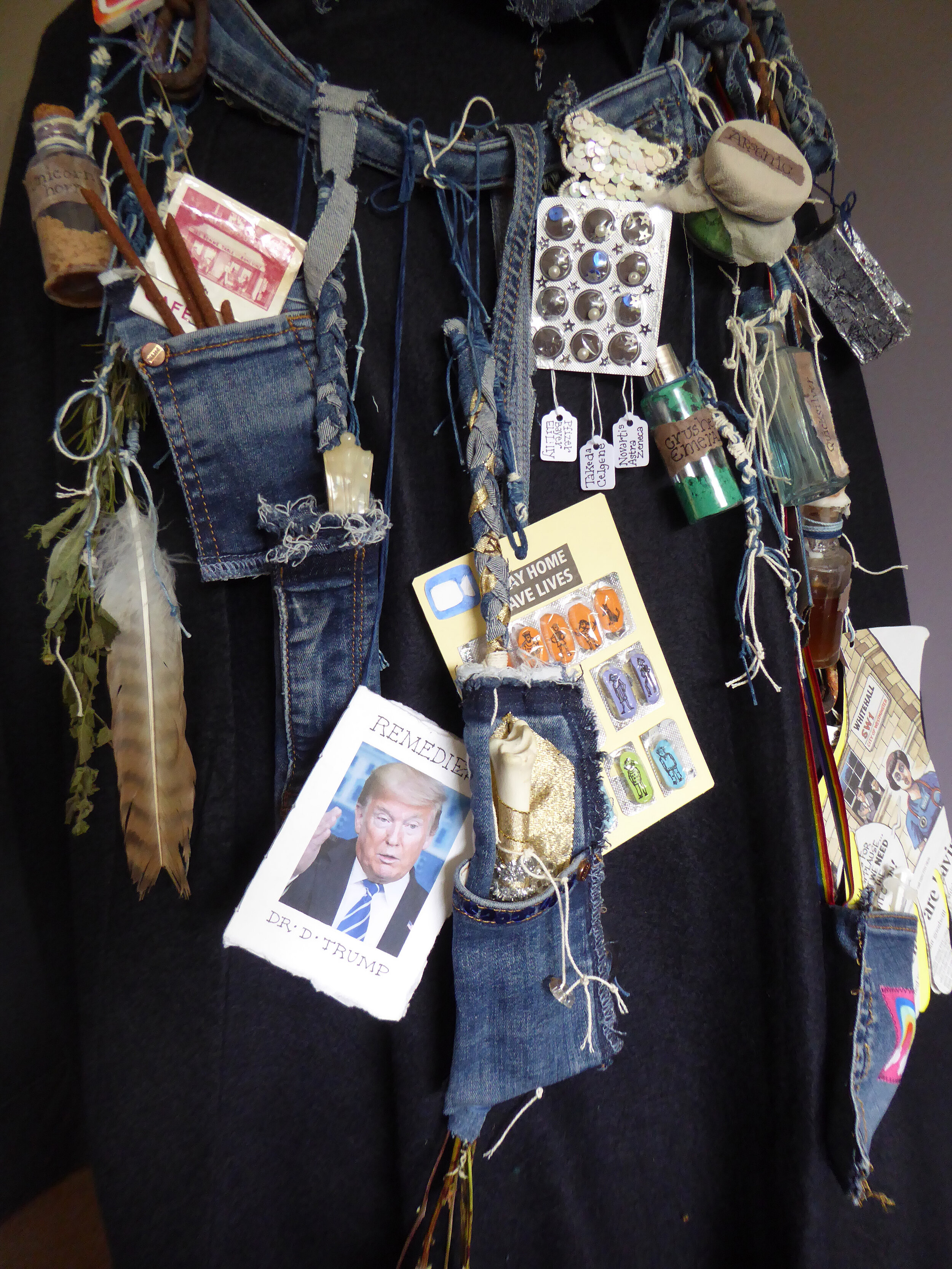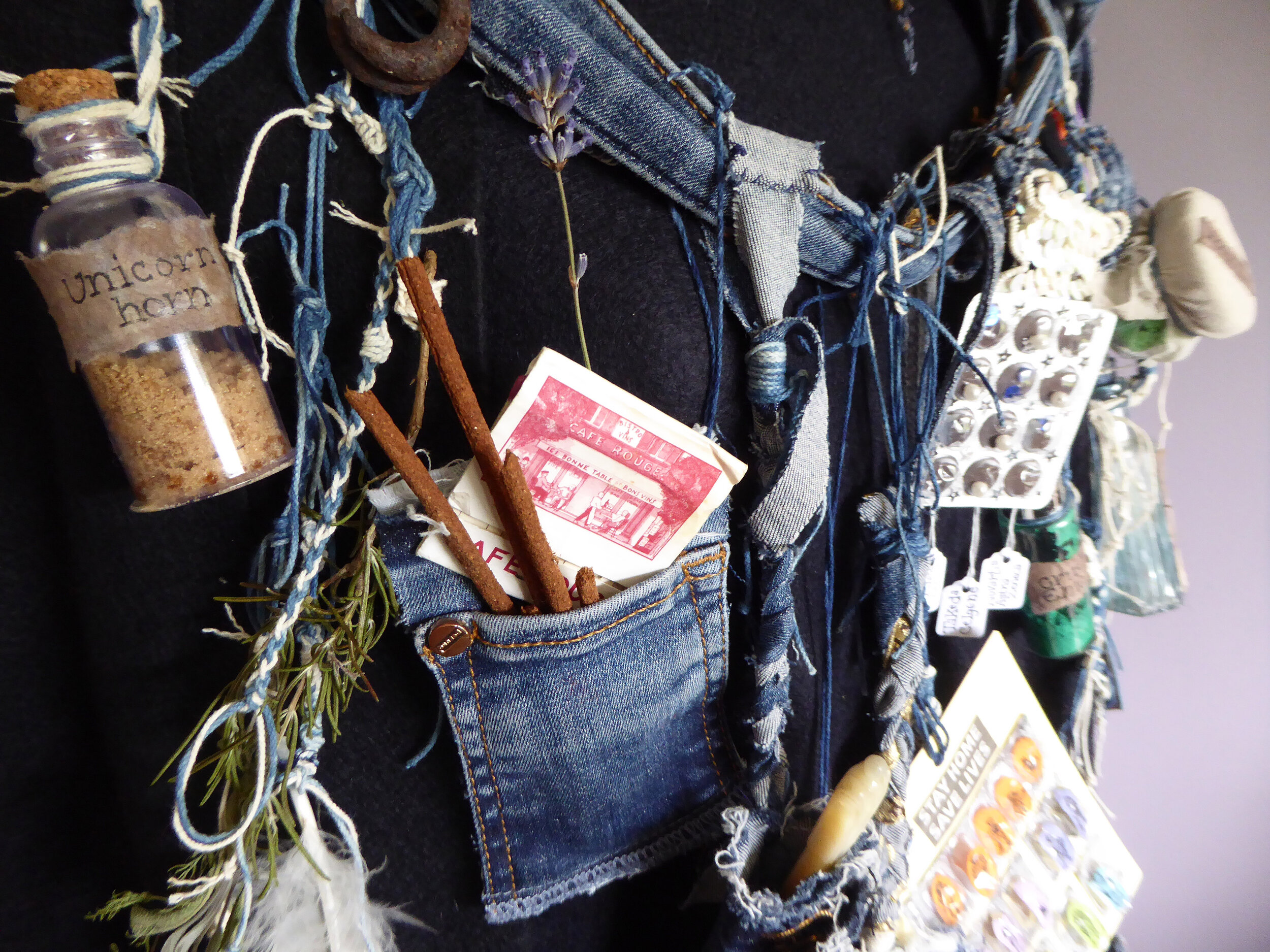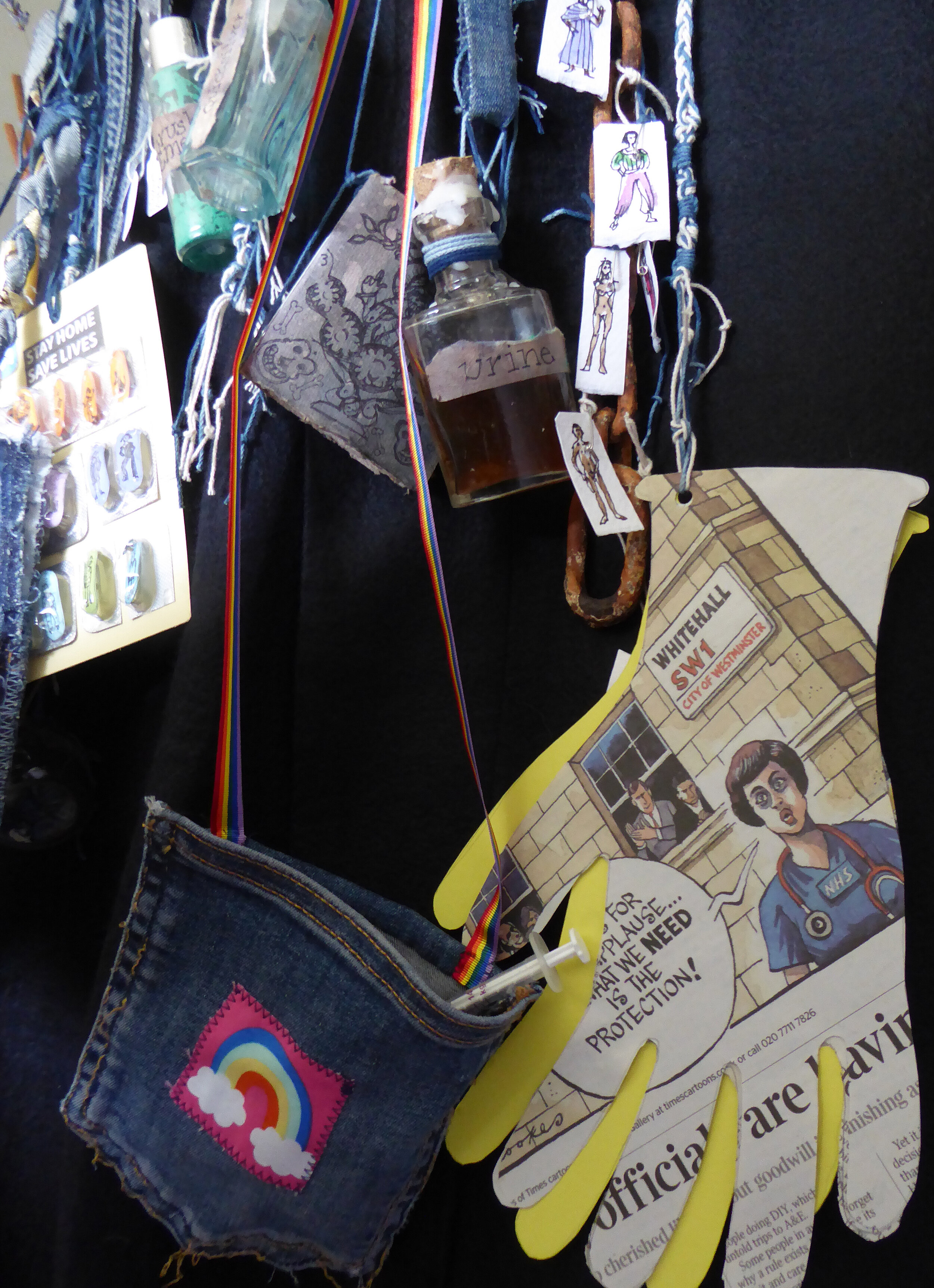Isabella Whitworth
Doctor Denim - the Plague Doctor
While making fabric masks during lockdown I looked into the historic use of masks during epidemics. An extraordinary 16th Century Plague Mask is held at the Deutsches Historisches Museum, Berlin. The mask had glass coverings to the eye holes and a curved, bird-like beak. It was believed that plague, such as the Black Death, spread through bad smells known as ‘miasma’ and the beak, strapped close to the nose, held aromatic herbs, dried flowers and sometimes a vinegar-soaked sponge. Fragrant smells were thought to fight the pestilential miasma.
Plague Doctors were hired by a community during an outbreak of the plague. They wore a beaked mask, long dense robes and a wide brimmed hat. Their key role was not to heal the sick, but to separate infected from well, to write and witness wills, arrange burials and count and record numbers of dead. Some doctors were renowned for their skills and even wrote treatises to assist others. But many took advantage of their proximity to the dead and dying to line their pockets.
We are now all familiar with manifestations of fear during an epidemic, and the universal desire to keep ourselves and our loved ones safe. Then as now, the medical profession offers hope, as does religious faith. Over the sewing machine making Covid masks, I considered remedies and ‘cures’ past and present, what they have in common, and I then made Doctor Denim.
‘Remedies’ are hung around the doctor’s neck in the manner of a Siberian shaman’s costume. The remedies reflect and blend contemporaneous knowledge of causes and transmission, anecdote, religious faith, folklore, superstition, fake news and conspiracy theories, the role of leaders and the state, racial or religious prejudices leading to ‘persecution as remedy’, duplicitous quackery, and the ever-present spur of money-making. Inequality of social circumstances could affect the likelihood of plague infection and death, as it does with Covid.
Materials
All materials used are recycled, ‘found’, or from existing studio stock. The only specially-bought items were the rainbow ribbons. The fabric elements are created from a partly deconstructed and entire pair of worn-out indigo-dyed (denim) jeans, a garment which has become iconic in our time. The black ‘robes’ are from my exhibition stand display.
Denim and indigo
Denim, from which jeans are made, is an indigo-dyed cotton twill suitable also for a Covid mask because its densely woven fabric will help to impede virus- carrying droplets from passing through it. Natural indigo-dyed fabric is revered by many for its healing properties; it coats fabric and offers a further layer of protection.
Notes on the remedies:
Chain
Blame is placed at both ends of the chain. The persecution by expulsion, fire or torture of marginalised minorities such as Jews, the disabled or gypsies, took place during times of plague. They were believed to be the source of the pestilence. Modern 21 st century conspiracy theories about coronavirus continue to spread through the press and social media (for example, blaming a Chinese laboratory, the Freemasons, Bill Gates, G5 and even Norwegian Salmon).
Holy relic
The bone is mounted in a denim pouch, blinged up by gold ribbon from a chocolate box. The power of a holy relic was historically believed by Christians to effect a miraculous cure, or aid the intercession of a saint on the patient’s behalf. Belief in the power of prayer and intercession is still with us today.
Blue and white threads
The remedies are suspended from blue and white twine cords. I use the twine for tying shibori and once through the vat they are dyed blue with indigo. Some cords are made with reference to the knotted technique of tzitzit, or fringes, for the tallit or Jewish prayer shawl.
Knotted threads
It was believed by Christians that the plague was divine punishment for human sin. Processions of flagellants would whip themselves and each other as penance, in the hope of avoiding the pestilence.
Stellar pills
Pharmaceutical companies compete or co-operate to develop lucrative medications which may alleviate symptoms, cure, or prevent infection. Disposable ‘gloves’ are fronted by a cartoon by The Times cartoonist Peter Brookes.
Eyam (hung in isolation down the back of the Doctor)
During the Black Death there were no remedies, beyond quarantine, that made much difference to outcome. When the Black Death arrived in the Derbyshire village of Eyam in 1665, the rector and a minister introduced a number of measures, such as outdoor church services and burial of the dead by their own families. They further persuaded villagers voluntarily to quarantine themselves as a community, in an act of great sacrifice and selflessness, with the aim of not spreading the disease beyond the village.
Donald Trump’s ideas on preventative measures are covered in a brief treatise.
Lockdown Pack
With no current cure or vaccine for Covid, a main course of action has been to avoid contracting and spreading the disease by means of quarantine and lockdown. Connection to locked-down friends and family through the internet has eased isolation for many: online contact has been a kind of remedy.
Flowers, herbs and incense
Bound up, dried fragrant herbs and flowers comprise a selection of scented remedies to ward off miasma. These include rosemary, mint, lemon balm, sage, lavender and meadowsweet. The Doctor’s beak is stuffed with lavender and rosemary. Incense is carried in a hanging pocket, together with Café Rouge matches. At exact time of writing, Café Rouge has announced that it too is a Covid casualty and is going into administration.
Medical knowledge: The Four Humours
Much medical knowledge during the Black Death was based on ancient theories of Hippocrates and Galen who described four bodily humours. This theory stated that the elements of earth, water, air, and fire are linked to bodily fluids of yellow bile (fire), blood (air), phlegm (water), black bile (earth). Remedies were prescribed to restore a natural balance which had been corrupted by the plague.
Bloodletting
Deliberate bleeding of a vein, with leeches (expensive, but less painful) or a knife (cheaper, and it hurt) was believed to be an effective method to rid the body of undesirable ‘hot’ blood.
Theriac
Theriac was a popular remedy among the wealthy and included many ingredients such as viper flesh and copious amounts of opium. Ingredients were mixed with honey or treacle and could be thickened and made into pills.
Crushed emeralds, arsenic, mercury (quicksilver)
Crushed precious minerals were made into concoctions to drink. Those who couldn’t afford them drank mercury or arsenic - which probably despatched them even more swiftly than the plague. It was thought that ‘like could be treated with like’, and one poison could cure another.
The feather: the Vicary Method (after inventor and doctor Thomas Vicary)
A live chicken had its back and rear plucked. The chicken’s bare skin was then applied to the swollen area of the body, and strapped on to ‘draw the disease’ from the patient. The chicken died, or the patient died, or both.
Unicorn horn
Drinking a potion comprising ground unicorn horn was thought to be an effective remedy for many sicknesses including the plague, and, not surprisingly, was very rare and expensive. To obtain any horn, the unicorn had first to be lulled into submission by a young female virgin.
Urine
Bathing in urine or smearing oneself in faeces was a cost-free remedy open to the poor.
The hope pocket
Our hopes for a Covid solution centre on the research to find an effective vaccine and the pocket contains part of a syringe. I’m happy for people to write their hopes on slips of paper and put them in the pocket.
Sources:
https://www.ancient.eu/article/1540/medieval-cures-for-the-black-death/
https://www.livescience.com/plague-doctors.html
https://en.wikipedia.org/wiki/Black_Death
https://en.wikipedia.org/wiki/Plague_doctor
https://en.wikipedia.org/wiki/Virology
https://www.eyam-museum.org.uk/about-us
https://www.dhm.de/blog/2017/07/27/beaky-plague-protection/
Isabella Whitworth: July 3rd 2020
THE PANDEMIC EFFECT
From day one of lockdown I stopped wanting to ‘make’: my creative batteries went flat overnight and dyeing scarves felt irrelevant. Instead I learned to film and edit some videos to support West Dean College where I (normally) teach regularly, and downloaded Zoom to keep in touch with students. I continued archiving a set of documents relating to the natural dye trade. The archiving project is long-term and often sidelined - for lack of time. No such excuse during Lockdown. I wrote up my archive-related natural dye experiments in my blog.
While making Covid masks for friends, I researched past uses of masks during pandemics. I found stories of the Plague Doctors, and an image of a 16th Century Plague Mask (at the Deutsches Historisches Museum, Berlin) burrowed deep into my imagination. Suddenly, I needed to make a plague mask. Covid masks with nose wires, incidentally, had suggested a way to support the mask’s beak using internal wires.
A frenzied, fully-charged period followed in which the mask, modelled and shaped on my own head, completely owned me. I unpicked, ripped, sewed and stuffed, bonded and braided until the wee small hours, and after a couple of weeks, Dr Denim emerged.

